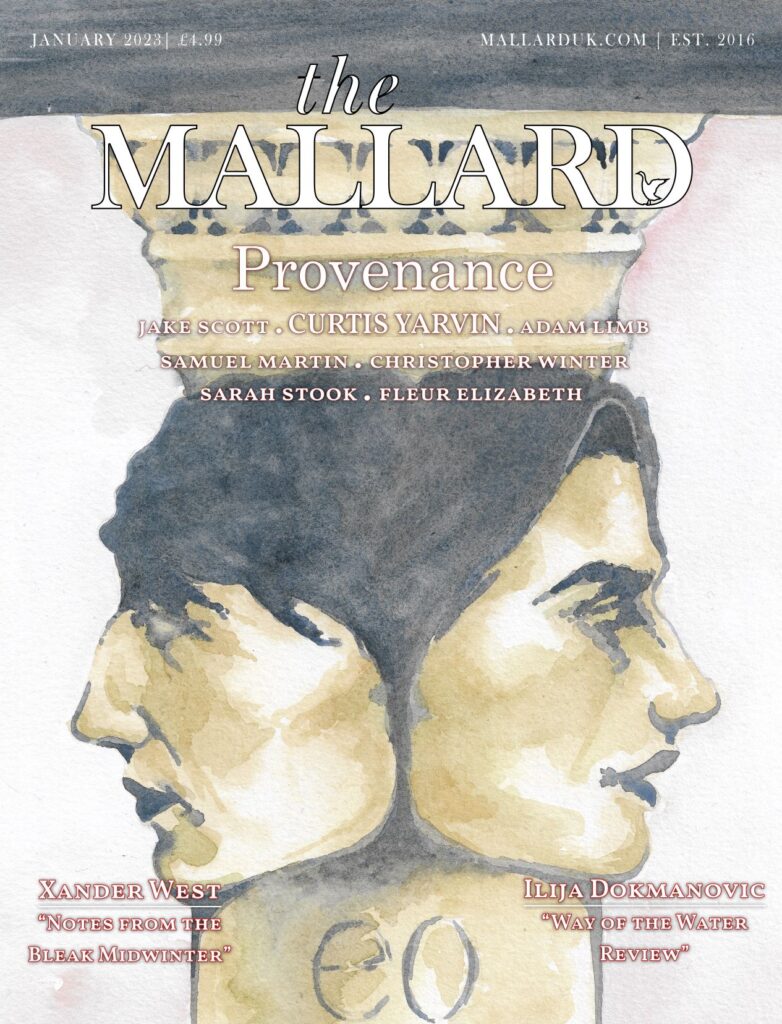The leadership election has brought about a wave of Conservatives flexing about how diverse and inclusive the Conservative Party is compared to Labour. Among the first days of the elections, there were endless tweets about how the party has the most diverse leadership election in history.
Andrew Bowie, Conservative MP for West Aberdeenshire and Kincardine tweeted that the reasons why he’s proud to be a Conservative MP include “first trans MP” and “the most diverse cabinet in history.”
The online publication Spiked, released an article on how “The Tory leadership race is the most diverse in history. And this has sent the left into meltdown.”
The founder of Tories for Equality tweeted: “I feel proud that British children today, whatever their race, can look at the talented & diverse slate of conservative leadership candidates & think “I could do that”. I didn’t have that growing up under the U.K. Labour government. Proud of my country & proud of my party.”
This is a new attempt to call the left the real racists while celebrating how greatly diverse the Conservatives are. It appears that too many Conservative party members truly believe that to defeat the libs you must become one. Die a hero or live long enough to see yourself become the villain.
This is not to say that a candidates’ ethnicity and gender may be a key aspect of their campaign. After all, there’s merit to having a story of being an outsider or overcoming a struggle related to their identity. However, these MPs have been completely tokenised by those on the right. It doesn’t matter what they’ve done to these identity obsessed Conservatives, as long as their identity is good optics. And despite the attempted revision of history, this is not new for the Conservative Party.
The Conservatives have ridiculed the Labour Party’s anti meritocratic all female shortlists. However, it appears that the Conservatives are also guilty of identity politics hiring…
Under Cameron’s government, there was an active attempt to make the government less pale, male and stale. From David Cameron’s own account in a recent article, he wrote for The Times:
“I immediately froze the selection of Conservative candidates. I said that from our broader candidates’ list we would draw up a priority list, of which half would be female and a large proportion would be from black and minority ethnic backgrounds. Associations in winnable seats would have to choose from this “A-list”, and they would be encouraged to select candidates through “open primaries” that were open to non-party members.”
Cameron admits that the call for positive discrimination was because “this wasn’t happening naturally”. Despite denying this was an act of positive discrimination, and instead dubbing it as “positive action”, Cameron states that “We headhunted great candidates from ethnic minorities and pushed them forwards.”
Despite Cameron’s doublethink to frame choosing candidates for the sake of their ethnicity as meritocracy exemplifies how the party has been poisoned by Blairism. How can the Conservative Party differentiate themselves away from Labour’s positive discrimination when it can be seen they acting in a similar nature?
Of course, this isn’t to state that the party leadership candidates aren’t deserving. The strongest, popular candidates are those from minority ethnic identities and/or women. It would be doing them an injustice to only celebrate them for their identity rather than what they believe. While the Westminster bunch pander to identity politics, it is clear that the party membership is focused on what a candidate wants advocates for more than the colour of their skin or what is between their legs.
You Might also like
-
Britain needs to be more family-friendly – but not on Corbyn’s model
Jeremy Corbyn is back in the news, though for admirable and respectable reasons this time. In a speech to the Commons on Tuesday, Corbyn argued that the current two-child limit to parental support benefits is immoral, specifically immoral to the 3rd, 4th or 5th child born to that parent, and instead it’s time “to scrap the two-child limit on benefits, and create a social security system that treats people with dignity, care and respect.”
It is quite common for socialists to claim that “it’s time” for the measures they propose, thus implying it has been a deliberate, cruel choice thus far to not pursue the measures, rather than caused by any practical limits. Nonetheless, stopped clocks and all that, and Corbyn has actually managed to touch on a problem quite serious in the British polity: we have an aging population and a declining birth rate, a combination which is, put nicely, a demographic time-bomb.
It was not that long ago that a Tory minister received quite substantial criticism for proposing a pro-natalist policy, which must of course raise eyebrows as to why Corbyn is being lauded for proposing something so similar. I think we can chalk that one up to a mistaken belief that the unnamed minister was attempting to “engineer” a birth rate change whilst Corbyn just wants to support the children born anyway.
Corbyn is, fundamentally, correct. The British state needs to do more to support children, but the focus should be on families, rather than children alone. By focusing on “children”, Corbyn is – unintentionally, I think we need to admit – neglecting the role parents play in both the creation and support of children. An avalanche of studies show the advantage children experience when both of their biological parents are involved in their childhood. Most importantly, the family is the finest form of welfare available in the world, and thinking the state can ever do more than supplement that welfare is misguided at best.
Since Corbyn has wandered into normative questions, we also need to clarify what is actually “immoral” in his eyes. Is it that further children would not get any support from the state? Perhaps, but then the immorality is not caused by the state, it is caused by nature as a rule and ameliorated by the state as an exception. Is it that, in providing support for the first two children but not any subsequent children? Maybe, but it is a dubious claim that state welfare is an expression of moral worth, though I appreciate I am battling with a socialist on this.
Moreover, this might be a typical “nasty party” attitude to take, but why does Corbyn stop at the 5th child? Why not make the point regarding the 10th, or 20th child? Pro-natalist policies are good, when they support the lives of children already in the world, but if we are not careful we can generate a trap in which it pays to have children, and not work. Incentivising parents to have more children when it is the state supporting them and not their own employment is risky business.
What it should be doing instead is less direct. Instead, the British state needs to foster an environment that is more supportive of families, both in the material and in the attitudinal sense, which I explored in a recent paper with the think tank Civitas. What is an unfortunate truth of this situation is that birth rates are almost uniformly a symptom of the social environment, with a positive correlation between economic development and falling birth rates. As far as I know, no developed nation has successfully broken this link, but that does not mean it cannot be done.
If the economic development of a nation has a bearing on birth rates, but birth rates are not the primary concern of national governments in their economic policies, then we cannot rely on the economic argument only, but there is still the possibility that economic policies could be shaped around families more. For one, as the Tory minister suggested, reforming the tax system to offer tax breaks in proportion to children (in both number and age) is an obvious option. The fact that Hungary has pursued such policies suggests it is possible, so the political will is all that stands in the way.
Inevitably, we need to think about housing. Property offers the most secure physical environment for parents to raise children in, especially as they make the transition from tenants to owner-occupiers, with which comes a greater degree of security. As has become common to remark on, millennials and Generation Z are facing crises of home-ownership, and without the security that can offer, families will start later and later, which not only has an effect on birth rates, but will mean those children born will be born into a world of insecurity.
Corbyn is right that the British state needs to support children more, but he has missed the key point: the British state is not hospitable to families, and needs to be restructured to be so.
Post Views: 654 -
Predictions for 2023 (Magazine Excerpt)
The 2022 midterms should have been a bloodbath. It should have been a huge sweep for the Republicans, relegating the Democrats to the depths of minority rule. Instead, the Republicans managed to win the House only respectably, whilst the Dems kept the house. It’s widely believed that better candidates could have kept the house.
Good candidates do exist. Ron DeSantis managed to make gains in Florida. Glenn Youngkin flipped Virginia. Brian Kemp safely won re-election in Georgia. Unfortunately, there were also many poor candidates. A competent Republican could have beaten John Fetterman in Pennsylvania. Somebody else could have beaten Katie Hobbs.
The same is true for Presidential elections. The Republicans have only won one election in the 21st century outright, with both the Electoral College and popular vote – George W. Bush in 2004. 2000 and 2016 both saw Electoral College wins but popular vote losses. Whilst external events came into play, it’s not a great look.
That being said, it almost seems that the Republicans like losing. They’re not making any real attempt at winning. Whilst they might choose decent candidates, there’s a high chance they won’t.

This is an excerpt from “Provenance”. To continue reading, visit The Mallard’s Shopify.
Post Views: 761 -
What are these ‘Christian values’? |
In the same way my last article ended, this first paragraph is being written on a Saturday, a day on which I often go to my Anglican parish church for the 9:30am Eucharist. After a week of exams, even a modern Common Worship service can warm my traditional soul. After the service, I turned to our good Rector and talked about a few things, namely about Calvin Robinson’s lack of ordination – our Rector thankfully sees the value conservatives bring to the Church of England – and asked “Just what are these Christian values people talk about, Reverend?”. Being a strong believer in the personal relationship between believer and the Almighty, he said to follow the guidelines of faith, hope and charity, and see where God guides us from there. While that may be enough to satisfy many Christians in a church environment, how do political conservatives, many of whom are not Christian, translate that into ideas and policies when we often cite our appreciation for ‘Christian values’?
Needless to say, one does not have to believe in God or the divinity of Jesus Christ to realise He had a lot of good things to say on morality that are relevant to the reader as a person, and to British politics. Christianity and interpretations of the Bible are responsible for much of how Britain functions politically, and even progressive politics – and it goes without saying that Christianity influences conservative social values. The historians Robert Tombs and Nigel Scotland made good cases to say that the British Labour Party has deeper roots in Methodist Christianity than Marxism, especially historically speaking. Methodist Christianity is probably the best example of the political Gospel having profound influence that lasts to this day. Christianity in England generally contributed greatly to the establishment of the welfare state and educating the masses; likewise, the abolition of slavery in the British Empire was driven through by Evangelical Christian William Wilberforce. Even the renowned political scientist Francis Fukuyama attributed much of the West’s development into liberal democracies as down to the influence of the Christian religion on politics and society in his books The Origins of Political Order and Political Order and Political Decay, as well as Christianity being responsible for the Western notion of universal equality. Christianity has much symbolic influence on the development of nation-states as well: the name “England” was given to us by the Roman Catholic Church, believing the land that is England to have been primarily made up of Angles and not Saxons, and of course the British flag is an amalgamation of three crosses that represent Christian saints.
And even if you don’t believe in it, you probably like a lot of what Christianity gave you. Given all it has accomplished, it may even be worth looking to an interpretation of Christianity for a moral system.
With this, one returns to the subject at hand. Writing for UK-based Premier Christianity, Peter Lynas argues that Putin’s recent invasion of Ukraine is “an attack on Christian values”. His general argument is that equality and human rights are products of Christianity, thus making Russia’s invasion and subsequent alleged human rights violations an attack on Christian values. On the other side, American congresswoman Marjorie Taylor Greene called for a restoration of ‘Christian values’, stating that they built America. British conservatives, from David Cameron to Nigel Farage, spoke highly of Christian values. Cameron in particular accredited the Bible to being a great moral influence, while Farage had much more to say on specific policies, such as restricting abortion. Even recently, a conservative Member of Parliament – a 2019-intake one – praised Christian values. There is indeed a place for these ‘Christian values’ in British politics. The trouble is, there doesn’t seem to be a consistent argument as to what these values are from the conservative right. Few people are actually adequately describing, in sufficient detail for meaningful political goals, these Christian values.
It is sensible to make a distinction between ‘Christian values’ and following the Bible, not least because these values ought to be promotable to those of others faiths or no faith. Following the Bible and being a Christian is appropriate for the Church to promote as priests in the Church of Christ, as opposed to the job of ministers in the service of the state. Theocracy – rule by priests – is not an accountable form of government, and theonomy – rule by scripture – is simply impractical for the modern era; the Bible was made for regulating personal conduct and driving societal change, not to be a substitute for a good legal system. After all, Jesus himself told us to “render therefore unto Caesar the things which are Caesar’s”, meaning that there is some distinction – though not necessarily a separation – between the state and the Church. The Christian values I will attempt to identify will be principles and notions that are derived from the Bible and Christian thinking in broad terms that are specific enough to be applicable while not being vague enough to be detached from Christianity.
Christianity is about love; there is nothing more obvious than this. This type of Christian love brings us to the first value I can identify, and that is paternalism. The Bible portrays God’s love as not just passive and merely tolerant, but active and guiding. Like a father traditionally would, God the Father lays down rules to bring us closer to moral virtue and goodness, and God the Son, Jesus Christ, consistently showed his willingness to care for, support, and feed people. It is clear that moral and material paternalism is a Christian value, and that can be reflected in governance – material paternalism through welfare for the truly needy and moral paternalism through a state that legislates on moral issues. This acts as a good transition to the next identifiable value of a belief in a firm, universal system of morality. It may be stating the obvious to say Jesus Christ preached about morality, and that it is a virtue to follow God’s moral law. Likewise, both conservatives and liberals can see the importance in society of following common, universal morals that are not mere formalities, but a set of rules and customs that people subscribe to in order to become better people. Universal morality is key to a functioning society. Do we not already agree to a set of universal morals, such as the belief that murder is wrong? Does not the widespread belief that violence is wrong help keep individuals and society safe? Point being, take a moral stand on social issues. Having a legal system will always lead to morals being imposed on others, and it only makes sense to impose a good moral system than to be weak-willed and push for dangerous societal atomisation.
One problem within mainstream conservatism and Western society in general is the shift towards moral relativism. In my last article, I referenced Edmund Burke’s claim that social order rests on moral foundations. Putting this simply, society and your day-to-day interactions function and go well because we collectively agree to the ‘ground-rules’, otherwise known as morality. As silly as it may seem to mention, I wouldn’t punch someone in the nose in response to being greeted with “Hello”, because that would be rude. It is the distinction between what thing is ‘right’ to do, and what is ‘wrong’ to do. Scale up this very small rejection of morality to the widespread rejection of law, the rejection of dignity and self-restraint, the rejection of being orderly and rejecting responsibility and the place where you live becomes worse-off. Some of those things just mentioned are quite widespread, perhaps with some such as the rejection of law it isn’t quite as chaotic as widespread murder, but little respect for the law in regards to, say, drug dealing and drug usage – which anyone under 20 knows is common – is just the start of it. Why follow one law if you don’t follow another? Perhaps, moving forward with firm morality, and Christian values, is in your interests. Following Christian morality, according to some studies, indeed reduces criminal behaviour and encourages positive traits. The logical conclusion is that the Christian moral system should be the standard for behaviour in the future, and there is no better place to look to the future than the education of children, especially at home. Some teachers have expressed frustration at the lack of parents teaching their children to behave politely or morally, and the answer to this is the re-emergence of following Christian values being the norm.
A word I used in the previous paragraph was “dignity”, and inalienable human dignity is absolutely a Christian value. As it is Christian to hold up God highly, so too does it make sense to hold up other humans, who are made in the image of God, as having inherent dignity that should not be taken away, especially not because of race. The Golden Rule – do unto others what you would have them do to you – on how to treat others with dignity comes from Jesus’ teachings. In particular, the dignity of children is especially important, and this includes those who are yet to be born. Naturally, the Christian principle of human dignity extending to all humans leads to the controversial position that humans that have not been born yet have equal dignity too, and so ending life before birth is not a matter to take lightly. But human dignity is more than the love of unborn children. Human dignity extends to all people, both progressives and traditional conservatives. Many conservatives likely feel that many pro-censorship progressives could use a lesson in this, and that freedom of belief – an extension of dignity – extends to those who disagree.
Perhaps less popular among the conservative right, this human dignity extends to all people in prison and economic migrants. If we are to subscribe to the Christian principle of paternalism, the government has a duty to truly rehabilitate prisoners. Indeed, many cases of good Christians being made out of some of the most violent criminals exist, as anyone who has attended the Alpha Course can tell you. Likewise, while conservatives such as myself object to mass immigration and illegal migrants coming over the English Channel, policies to address these issues – especially the latter – must recognise their inalienable human dignity. How this is done is of course open to interpretation, and that is a good thing – these values must be broad enough to allow for healthy debate, but conservatives who wish to advocate for these principles must remember that the inalienable and universal qualities matter, especially in our image towards both opponents and potential voters. For the record and to reiterate, this doesn’t mean conservatives should not stop channel crossings or facilitate them; it means to stop it humanely.
Inalienable human dignity applies to all individuals, and this brings the reader to the principle of individual responsibility. This may be my Evangelical Protestant/Anglican bias showing, but recognising the uniqueness and individuality of each person is evident in the Bible. Each of us has a certain gift, and so each of us are responsible in different ways. From this, conservatives should draw on the idea of individual responsibility, tempered by some collective duty, which too is Biblical. In one sense, the principle of individual responsibility is tied in a complementary manner to valuing morality, as there is an emphasis on personal accountability as to how well you follow Christian morals. In other words, it’s holding yourself to certain standards. Practising self-restraint with behaviour, to act according to what is right and wrong, is an act of taking individual responsibility. This value in particular is hard to encourage politically because of how it is about influencing people’s mindset. People have to be convinced that the moral system they are holding themselves to account to is worth following, and this will bring about individual responsibility in regards to morality. This may come about naturally as a hypothetical government that has read this article and agreed wholeheartedly tries to implement these values, and people recognise the virtue in them. Individual responsibility is not very controversial among conservatives, so I’ll move on to the more controversial topic; collective responsibility to altruism and charity, and whether this means we ought to be socialists.
My initial plan was to list out every argument, every talking point and each verse for why Jesus would have voted for Jeremy Corbyn or endorsed Steve Baker as leader of the Conservative Party. Having read articles by Huffpost, various smaller magazines and academics, Forbes, the Christian Socialism Institute and a video from Novara Media I will attempt to summarise what each side said, in short, and what the truth likely is. The articles in favour of portraying Jesus as favouring left-leaning economics surprised me by quoting scripture far more often than those arguing the contrary. Their arguments rested on scripture criticising wealth, the pursuit of wealth and greed, praising giving up private property and of course, the comparison of a camel going through a haystack to a rich man entering the Kingdom of God.
From those against the idea Jesus was a socialist or economic progressive, almost every article started by saying socialism did not exist at the time of Jesus Christ, and most mentioned that Jesus was against coercive force. As taxes and government intervention is ultimately supported by coercive force, Jesus would have disapproved. Notably, it was said that helping the poor in a Biblical context has to be voluntary, and an act of charity, not an act of state-sponsored wealth redistribution. Talks of giving up private property were stated to be not an act of collectivisation, but strictly voluntary acts of altruism.
Forbes writer Bill Flax, his biases aside, reflect the view I concluded with very well by saying “I’m a capitalist and you might be socialists. Christians can be both, but Christ was neither. He was the Author and Finisher of faith”. As stated earlier on in this article, I am attempting to take religious texts and apply them to politics in the form of values/principles, so naturally there is friction between trying to translate commands over personal conduct into government policy. What leftists trying to say Jesus was a socialist get wrong is that Jesus did not call for mass wealth redistribution, but rather called for altruism and to reject the idea that wealth was important. He called for prioritising your spiritual self; to say He was calling for socialism would be to forget that Jesus is a religious figure with spiritual concerns. Likewise, what many capitalists get wrong is that Jesus had a strong concern for the poor, and strongly criticised the accumulation of wealth for wealth’s sake, and of course he encouraged giving to the poor. So, what Christian principle can one develop from this?
The final principle that one can infer from Biblical teaching is that the government must foster a community-orientated society that encourages individuals to believe strongly in charity and altruism, and care for their needy neighbours; the Christian principle of community-centred altruism. Government policy must not put GDP first. I am aware this talking point is almost painfully repeated among conservative internet personalities, but it is still an important truth. Economic growth is good when it leads to economic development; when economic growth leads to a higher quality of life. Further still, in balance, the government should respect private property as a means to generate wealth for society to benefit from, and so that private citizens can indeed be altruistic with their own wealth.
I often read calls for separation of church and state from people replying to GBNews tweets about how the Archbishop of Canterbury says this and that, and how religion should stay out of politics. I am reminded of how many Americans complain of inefficient government, and how their state should be reduced and further constrained, with powers further separated and devolved to make government less powerful. Except the reason why America’s political system is so inefficient is largely due to the separation of powers, the overbearing constraints on the executive and the culture that has come out of it. America needs a less restrained executive and civil service in order to produce better government. See Political Order and Political Decay for further details.
Similarly, conservatives in Britain should not call for the destruction of another ancient state institution, which would likely not return should we tear it off, such as the Church of England from its established role, on the grounds that it is too liberal. That would be exactly what progressive liberals want, as religion is often the best source of conservative, traditional morals and values. Rather, if the Archbishop of Canterbury focused more on the Gospel and Christianity, he would receive far much more praise from conservatives. Conservatives should seek to promote social conservatism within the Church of England, and make use of a fantastic vehicle for morality. It was only recently that the Prime Minister no longer had powers over appointing bishops in the Church of England, and the Prime Minister still has an influential say on who is picked to be Archbishop of Canterbury. If we in Britain are going to get our moral teachings from anywhere, would we want it from an institution that has existed in one form or another for over a thousand of years, or from the musings of self-appointed philosophers? Christianity guided Europe for over a millenia; rocking the foundations of our society, as we are right now, is not working out.
Numerous Members of Parliament have resigned from their seats or other parliamentary positions as of the date this article has been published, from Neil Parish to Christopher Pincher. One could argue that too many politicians no longer really believe in absolute morality, and certainly do not hold themselves responsible to a moral system. If politicians were more like Christ, espousing Christian values, surely this problem would be far less pronounced. We would have far less lies being told (lying is something that Jesus is not fond of) and greater dedication to serving the people; paternalistic love. Politicians holding themselves to account to a system of morality is something worth agitating for. If you are a member of a political party, you may want to only support candidates that discuss and hold themselves accountable to morality. Perhaps you can act as an example for others to follow, as Jesus Christ did, and follow Christian values. Maybe you could stand for elected office, or find work in government departments, and see the spread of Christian values in politics by your own work. The emphasis in all of this is that you should do something, big or small.
If we had the aforementioned Christian values put at the centre of public policy, with community, human dignity and paternalistic love in mind, Britain may well be better off, and the British people far more content with government. Such change will not happen without people being vocal or active about their concerns; A politician will not answer a question that he isn’t asked. People may sneer at you for defending Christian values publicly, but these people, and others, will sneer at you for almost anything. If there is no good answer to ‘Why not?’, then consider giving it a go.
Post Views: 628



